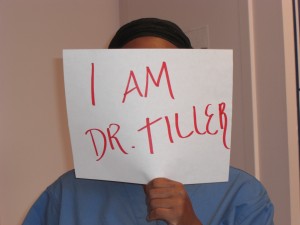 As I write this message, I am sitting in a panel at the Section of Legal Education and Admissions to the Bar meeting, in Indianapolis, on”Rethinking Legal Education in Hard Times.”Here are a few highlights:
As I write this message, I am sitting in a panel at the Section of Legal Education and Admissions to the Bar meeting, in Indianapolis, on”Rethinking Legal Education in Hard Times.”Here are a few highlights:
Tom Sullivan, Provost of the University of Minnesota, and former dean at three law schools, spoke about the need for law schools to think strategically to weather the economic storm, which he described in terms of a”sea change”in the structure of educational institutions. Tom noted that this past week, he had to cut $200 million from the UM budget, but observed that these problems will trickle down to law schools and other departments, not only in his but in other universities. Of course, Minnesota is the second largest university in the United States with 66,000 students on four campuses, so we may be tempted to discount his comments as inapplicable to [other schools], but I fear he is not off base, when he asks how we can grow a school when our sources of revenue are declining and the opportunities for our graduates are diminishing.
Tom was preceded on the panel by Jim Leipold, Executive Director of NALP, who reminded everyone (of something we already knew) that the job market for law graduates is very bad, and that most observers predict long-term changes in hiring patterns (fewer hires), salaries (lower), and law firm expectations (grads will need to be”practice ready”).
Judge Solomon Oliver, U.S. District Judge from Ohio, discussed the status of efforts to increase diversity in law schools and the profession. He noted anecdotally that he almost never sees an African-American lawyer arguing cases in his court. Despite increases in diversity enrollment in the 70s and 80s, the numbers have not increased since the mid-90s, despite the addition of some 13,000 law school seats. The number of lawyers who represent racial minorities is significantly less than the percentage of these groups in the overall population. Law schools need to address the real problems associated with attracting, admitting, graduating and employing diverse individuals, and in doing this, business as usual will not be enough. He noted that the US News ranking system for selectivity cuts against efforts to increase diversity enrollment, and that financial barriers often exclude diverse students.
Professor Michael Olivas from the University of Houston (and a founding director of The Access Group) noted that while diversity in law schools may have increased, the percentage of Mexican-American law student has declined. Financial issues pervade the population of minority students, and many do not seek loans, work through law school, and float to the bottom of the class. The formula of working for a couple of years before coming to law school does not work for diversity students; they need to borrow for education, and get through school as early as possible in life. For these graduates, there ARE unmet job opportunities in the marketplace. However, first generation law students, which many of these students are, do not have the financial and business acumen to make sound decisions about their careers, and need special guidance to help them get through law school. Olivas said,”If you live like a lawyer while you are in law school, I promise you will live like a law student when you are a lawyer.”
AALS Executive Director (and former dean, as well as MacCrate Task Force member) asserted that we should not change our agenda regarding legal education, because of the tough economic times. The largest cohort of graduates go to work in small firms, and this is not likely to change; law schools need to do more to prepare these students to practice law. There is more foment about law school curriculum today than at any time in the past forty years. During this time, the two major developments, the introduction of law and economics and clinical education, arrived, but did not change the basic curriculum. Today, faculties everywhere are asking fundamental questions about what we are doing and how to structure a curriculum for a globalized, interconnected world. There is a sense that we need to teach students to do the tasks that lawyers are required to perform. This is partly because of the influence of clinical faculty, but it is more than this. The Carnegie Foundation Report (authored by many individuals who were not legally-trained) has given us permission to talk about curriculum again. The Socratic Method tends to strip out professional values and ignore skills; we need to integrate the teaching of legal analysis with the teaching of skills and values. We need to continue this dialogue through this period of economic downturn, so that we can institute change when times get better.
Pauline Schneider, is a member and former Chair of the Legal Education Council, a former member of the ABA Board of Governors, and a partner Orrick, Herrington, a major Washington, D.C. law firm, asked the old question, with the largest number of lawyers per capita in the world and diminishing career expectations, can we in good faith ask students to borrow vast sums to finance legal education? If most graduates join solo and small firm practices, how will they be able to repay loans given the salaries offered in those firms? Given the relationship between economic marginality and the occurrence of professional disciplinary procedures, what are the implications for legal education generally, the advice law schools give students specifically, and the structure of the educational process in the larger context. We need to be honest with students to help them assess what they can borrow, what kind of lifestyle they should expect, and the consequences of taking on loans they cannot repay. Educators, for their part, must reduce the cost o f attendance for students.
The last speaker, Bryant Garth, Dean of Southwestern Law School and former head of the American Bar Foundation, provided some parting thoughts: Is the current model for legal education”sustainable?”What about law firms? Data from the”After the JD”study suggests that non-elite, tuition-driven schools that send their graduates to smaller firms are less impacted by the current recession than elite schools. It is time to recognize that we have bi-modal education system. There are less than 50 elite schools, where more than 50% of the graduates go to work for elite firms; for non-elite schools, about 10% go to work in elite firms, and most graduates go to work for small firms or open their own practice. The 10% of graduates from non-elite schools who go to work for elite firms are more likely to stay at those firms compared to graduates of elite schools who frequently leave after 2-3 years. Bryant observed that those who have come the furthest in terms of social mobility are often the happiest, compared to graduates who earn the most money. Diversity is also bi-modal, with diverse students at elite schools more likely to come from elite backgrounds, including well-to-do true Africans, Hispanics from Argentina, etc., while non-elite schools are more likely to enroll working class African Americans, Latinos, and first generation immigrants from other cultures. He urged law schools to practice transparency in advising applicants and students about opportunities.
A lot to think about!
Comments welcome.
–Gary A. Munneke
[Gary Munneke is a Professor of Law at Pace University and a member of the ABA House of Delegates. He served on the ABA Board of Governors from 2006 to 2009]


 Horace Anderson has been selected by vote of the 2009 graduating class as Pace Law School’s “Outstanding Professor of the Year.” Students use words like “brilliant” and “dedicated” to describe Professor Anderson, who is an IP specialist. He is also a Feminist Law Prof,
Horace Anderson has been selected by vote of the 2009 graduating class as Pace Law School’s “Outstanding Professor of the Year.” Students use words like “brilliant” and “dedicated” to describe Professor Anderson, who is an IP specialist. He is also a Feminist Law Prof, 

 Feminist Law Prof Kerry Abrams (UVa) and her co-author Peter Brooks (Yale, Comp. Lit.) have posted to SSRN their article, “Marriage as a Message: Same-Sex Couples and the Rhetoric of Accidental Procreation.”
Feminist Law Prof Kerry Abrams (UVa) and her co-author Peter Brooks (Yale, Comp. Lit.) have posted to SSRN their article, “Marriage as a Message: Same-Sex Couples and the Rhetoric of Accidental Procreation.”  Sandra Bullock’s new vehicle, The Proposal, seems equally problematic. She’s a hard-driving evil boss who, to keep her job and avoid deportation (she’s Canadian) forces her sexy male employee into a sham marriage. From this we can draw that Hollywood’s testosterone-driven industry wants us to think that women with corporate power abuse it and that they do so in part through sexual harassment of men. It’s yet another male fantasy of why men should keep their power and how women with power are dangerous.
Sandra Bullock’s new vehicle, The Proposal, seems equally problematic. She’s a hard-driving evil boss who, to keep her job and avoid deportation (she’s Canadian) forces her sexy male employee into a sham marriage. From this we can draw that Hollywood’s testosterone-driven industry wants us to think that women with corporate power abuse it and that they do so in part through sexual harassment of men. It’s yet another male fantasy of why men should keep their power and how women with power are dangerous. 


 The website
The website  honors the work of all who work for reproductive rights:
honors the work of all who work for reproductive rights: nd stories of individuals who have dedicated their lives to making abortion safe, legal, healthy, and accessible to women and girls. These people may be nurses, counselors, escorts, volunteers at abortion funds, or abortion doctors themselves. You will not see the faces of these providers to protect their safety. What you will see is the story they decide to share – how they came to abortion work, what their function is at their abortion clinic, or their personal abortion story. We want to humanize these individuals to convey the kindness, courtesy, justice, love, and respect they have for women and the health care choices women make. We share our stories in hopes of ending clinic violence, to alleviate the shame associated with the abortion experience, and as an homage to Dr. Tiller’s outstanding and courageous life work.
nd stories of individuals who have dedicated their lives to making abortion safe, legal, healthy, and accessible to women and girls. These people may be nurses, counselors, escorts, volunteers at abortion funds, or abortion doctors themselves. You will not see the faces of these providers to protect their safety. What you will see is the story they decide to share – how they came to abortion work, what their function is at their abortion clinic, or their personal abortion story. We want to humanize these individuals to convey the kindness, courtesy, justice, love, and respect they have for women and the health care choices women make. We share our stories in hopes of ending clinic violence, to alleviate the shame associated with the abortion experience, and as an homage to Dr. Tiller’s outstanding and courageous life work.




 As I write this message, I am sitting in a panel at the Section of Legal Education and Admissions to the Bar meeting, in Indianapolis, on”Rethinking Legal Education in Hard Times.”Here are a few highlights:
As I write this message, I am sitting in a panel at the Section of Legal Education and Admissions to the Bar meeting, in Indianapolis, on”Rethinking Legal Education in Hard Times.”Here are a few highlights: Feminist Law Prof Jennifer Hendricks (Tennessee) has posted to SSRN her article, “Contingent Equal Protection.” Here is the abstract:
Feminist Law Prof Jennifer Hendricks (Tennessee) has posted to SSRN her article, “Contingent Equal Protection.” Here is the abstract:





